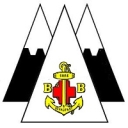Broad Crag - 934 m (3,064 ft)
Broad Crag is the 3rd highest peak in England. For most of its history, along with its near neighbours, Scafell Pike and Ill Crag, it was a nameless peak in a group called the Scawfell Pikes. Like nearby Ill Crag, it wasn't considered a separate peak (even by Wainwright), but with a prominence of 52 m, it now is. When it was given a name, account was clearly taken of the mountain's most distinctive feature (the extensive and imposing crag that drops down on its north western flank towards the Corridor Route from Seathwaite to Scafell Pike).
Wainwright also remarked on how infrequently its summit was visited even though a major thoroughfare from Esk Hause to Scafell Pike passes within 100m of it. He puts this down to it being "littered deep with piled boulders" with "a risk of breaking a leg at every stride" and also describes it as "the roughest summit in Lakeland".
See its entries on Walkhighlands or Wikipedia or view it from above on Google Earth.
Broad Crag doesn't need a translation, as it is perfectly understandable and descriptive in Modern English, but an etymology of both words is given below. Broad derives from Brad (Old English) meaning Broad or Wide, as used in the name of the English city of Bradford.
Crag came from a Celtic word (possibly Welsh or Cumbric) equivalent to the Modern Welsh word Craig (Creic in Old Welsh, Craic in Middle Welsh), which means Rock and which has since been transliterated from Welsh or Cumbric into Middle English as Cragge and found its way into Modern English as Crag. For more information on Celtic languages, see Virtual Linguistics.
You can read more about Cumbric in the Ill Crag entry.
Published on





